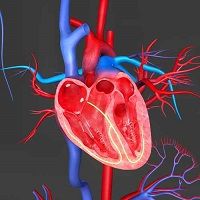Article
Radial Artery Approach Safer than Femoral
Author(s):
Interventional cardiologists would do better to access heart arteries through a patient's arm than groin, a Dutch study found. Though the radial approach is technically more difficult, it is safer with a lower risk of severe bleeding.

Interventional cardiologists would do better to access heart arteries through a patient’s arm than groin, a Dutch study found.
Reporting March 16 at the American College of Cardiology meeting in San Diego, CA, Marco Valgimigli, MD, PhD, and senior interventional cardiologist at the Erasmus University Medical Center in the Netherlands said he would push to have guidelines changed to favor the radial approach.
With colleagues he studied 8,400 patients at 78 hospitals in 4 European countries who had angiograms.
Though his study did not show a significant reduction in the composite rate of death, heart attack or stroke at 30 days after catheterization, it did find a significant difference in the study’s second primary endpoint. That included major bleeding in patients whose physician’s used the femoral artery approach.
In the arm-access patients, the rate of serious events within 30 days was 9.8% while in those whose arteries were accessed through the groin, the rate was 11.7%. Major bleeding accounted for the difference, which happened in 1.6% of arm patients and 2.3% of groin patients.
The radial approach is already more common in Europe, where interventional cardiologists use the arm about half of the time or more.
“This study shows that interventional cardiologists who are experienced with the radial approach have nothing to lose and everything to gain by using the arm as the access point for these procedures,” he said, including reducing hospital stays and associated costs.
Patients recover from the radial approach more quickly.
The reason many surgeons prefer the femoral approach is that the artery there is less likely to spasm and the radial artery is more technically difficult to access, and requires the use of smaller devices inside the artery.
The study was funded in part by a device-maker.





